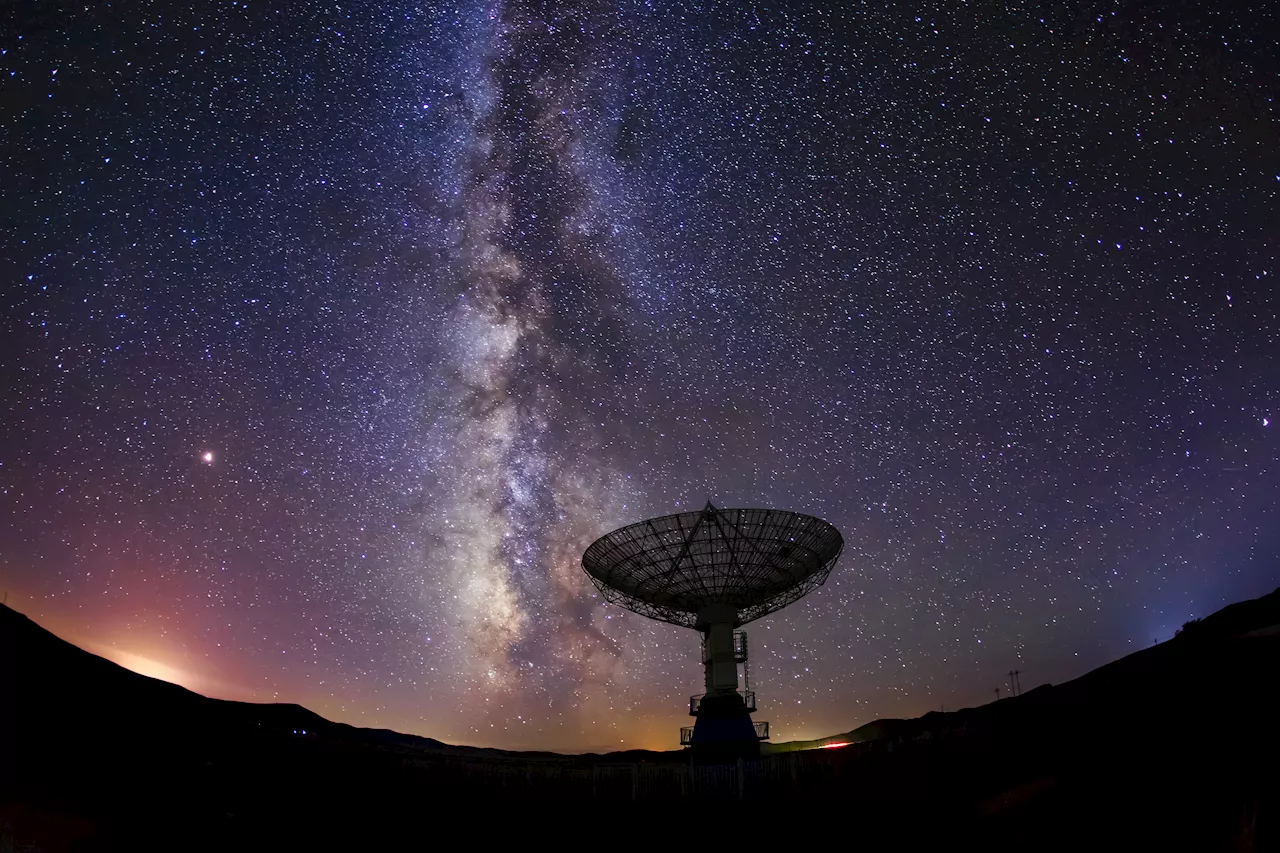Using the LOw-Frequency ARray (LOFAR), astronomers have discovered a new radio galaxy. The newfound galaxy, designated J0011+3217, showcases peculiar features, including a one-sided secondary lobe. The finding was reported in a research paper published June 21 on the pre-print server arXiv.
Astronomers discover a peculiar radio galaxy retrieved 1 July 2024 from https://phys.org/news/2024-07-astronomers-peculiar-radio-galaxy.html
This document is subject to copyright. Apart from any fair dealing for the purpose of private study or research, no part may be reproduced without the written permission. The content is provided for information purposes only.Use this form if you have come across a typo, inaccuracy or would like to send an edit request for the content on this page. For general inquiries, please use ourThank you for taking time to provide your feedback to the editors.
Your feedback is important to us. However, we do not guarantee individual replies due to the high volume of messages.to let the recipient know who sent the email. Neither your address nor the recipient's address will be used for any other purpose. The information you enter will appear in your e-mail message and is not retained by Phys.org in any form.Get weekly and/or daily updates delivered to your inbox.
Physics News Science News Technology News Physics Materials Nanotech Technology Science
United States Latest News, United States Headlines
Similar News:You can also read news stories similar to this one that we have collected from other news sources.
 WSP: Driver caught using impressive dummy to evade fines while using HOV lanesA Washington State Patrol (WSP) trooper ticketed a man for driving in the High Occupancy Vehicle (HOV) lanes with a fake 'dummy' passenger.
WSP: Driver caught using impressive dummy to evade fines while using HOV lanesA Washington State Patrol (WSP) trooper ticketed a man for driving in the High Occupancy Vehicle (HOV) lanes with a fake 'dummy' passenger.
Read more »
 People Are Using AI to Turn Memes Into Videos and It’s Low Key TerrifyingScience and Technology News and Videos
People Are Using AI to Turn Memes Into Videos and It’s Low Key TerrifyingScience and Technology News and Videos
Read more »
 Columbus Weather: Low humidity, with a low chance for light showersWe are setting up for a dry pattern with only a slight chance for rain. Low humidity & mild temps the next several days then warming up more later next week.
Columbus Weather: Low humidity, with a low chance for light showersWe are setting up for a dry pattern with only a slight chance for rain. Low humidity & mild temps the next several days then warming up more later next week.
Read more »
 Astronomers get closer to solving the lingering mystery of fast radio burstsRobert Lea is a science journalist in the U.K. whose articles have been published in Physics World, New Scientist, Astronomy Magazine, All About Space, Newsweek and ZME Science. He also writes about science communication for Elsevier and the European Journal of Physics. Rob holds a bachelor of science degree in physics and astronomy from the U.K.
Astronomers get closer to solving the lingering mystery of fast radio burstsRobert Lea is a science journalist in the U.K. whose articles have been published in Physics World, New Scientist, Astronomy Magazine, All About Space, Newsweek and ZME Science. He also writes about science communication for Elsevier and the European Journal of Physics. Rob holds a bachelor of science degree in physics and astronomy from the U.K.
Read more »
 Unexplainable radio signal has astronomers scratching their headsAstronomers are baffled by an unexplainable radio signal that keeps repeating itself every hour, but they may know its source.
Unexplainable radio signal has astronomers scratching their headsAstronomers are baffled by an unexplainable radio signal that keeps repeating itself every hour, but they may know its source.
Read more »
 A strange intermittent radio signal from space has astronomers puzzledWhen astronomers turn our radio telescopes out towards space, we sometimes detect sporadic bursts of radio waves originating from across the vast expanse of the universe. We call them 'radio transients': some erupt only once, never to be seen again, and others flicker on and off in predictable patterns.
A strange intermittent radio signal from space has astronomers puzzledWhen astronomers turn our radio telescopes out towards space, we sometimes detect sporadic bursts of radio waves originating from across the vast expanse of the universe. We call them 'radio transients': some erupt only once, never to be seen again, and others flicker on and off in predictable patterns.
Read more »
